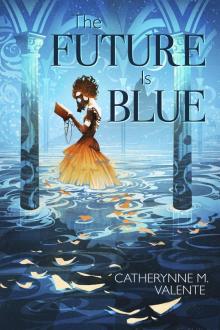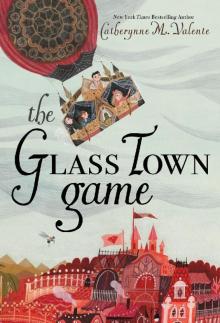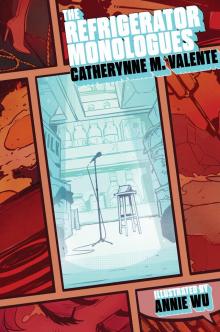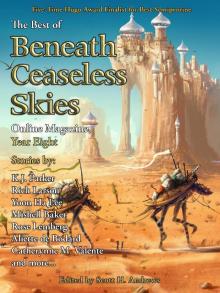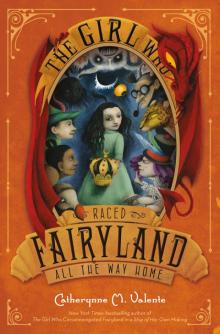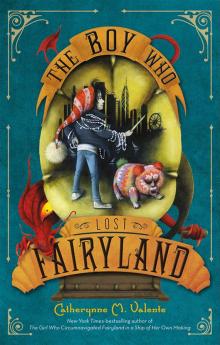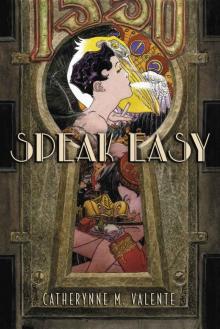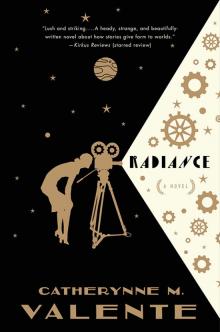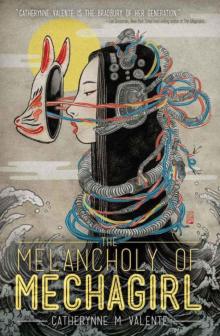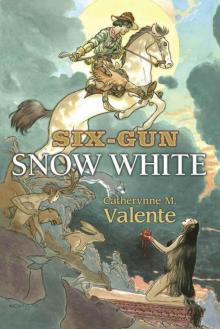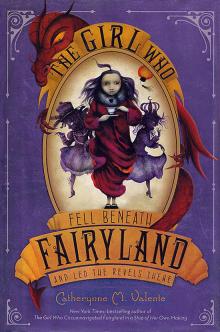


The Archer
Paulo Coelho
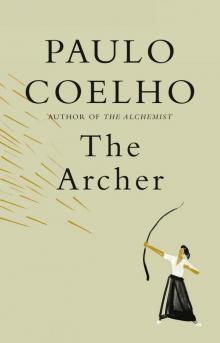
ALSO BY PAULO COELHO
The Alchemist
The Pilgrimage
The Valkyries
By the River Piedra I Sat Down and Wept
The Fifth Mountain
Veronika Decides to Die
Warrior of the Light: A Manual
Eleven Minutes
The Zahir
The Devil and Miss Prym
The Witch of Portobello
Brida
The Winner Stands Alone
Aleph
Manuscript Found in Accra
Adultery
The Spy
Hippie
THIS IS A BORZOI BOOK PUBLISHED BY ALFRED A. KNOPF
Translation copyright © 2003 by Margaret Jull Costa
All rights reserved. Published in the United States by Alfred A. Knopf, a division of Penguin Random House LLC, New York, and distributed in Canada by Penguin Random House Canada Limited, Toronto. Originally published as an ebook as O caminho do arco by Sant Jordi Associados. Copyright © 2003 by Paulo Coelho. This edition is published by arrangement of Sant Jordi Asociados Agencia Literaria SLU, Barcelona, Spain.
www.aaknopf.com
Knopf, Borzoi Books, and the colophon are registered trademarks of Penguin Random House LLC.
Library of Congress Control Number: 2020933484
ISBN 9780593318270 (hardcover) | ebook ISBN 9780593318287
ISBN 9781524711870 (open market)
This is a work of fiction. Names, characters, places, and incidents either are the product of the author’s imagination or are used fictitiously. Any resemblance to actual persons, living or dead, events, or locales is entirely coincidental.
Cover design by John Gall
Illustrations copyright © 2019 by Christoph Niemann
ep_prh_5.6.0_c0_r0
To Leonardo Oiticica, who,
one morning, upon seeing me practice
judo at Saint-Matin,
gave me the idea for this book.
O Mary! conceived without sin,
pray for us who turn to you!
Amen.
A prayer without a deed is an arrow without a bowstring;
A deed without a prayer is a bowstring without an arrow.
—Ella Wheeler Wilcox
Contents
Prologue
Allies
The Bow
The Arrow
The Target
Posture
How to Hold the Arrow
How to Hold the Bow
How to Draw the Bowstring
How to Look at the Target
The Moment of Release
Repetition
How to Observe the Flight of the Arrow
The Archer Without Bow, Without Arrow, Without Target
Epilogue
Acknowledgments
Prologue
“Tetsuya.”
The boy looked at the stranger, startled.
“No one in this city has ever seen Tetsuya holding a bow,” he replied. “Everyone here knows him as a carpenter.”
“Maybe he gave up, maybe he lost his courage, that doesn’t matter to me,” insisted the stranger. “But he cannot be considered to be the best archer in the country if he has abandoned his art. That’s why I’ve been traveling all these days, in order to challenge him and put an end to a reputation he no longer deserves.”
The boy saw there was no point in arguing; it was best to take the man to the carpenter’s shop so that he could see with his own eyes that he was mistaken.
Tetsuya was in the workshop at the back of his house. He turned to see who had come in, but his smile froze when his eyes fell on the long bag that the stranger was carrying.
“It’s exactly what you think it is,” said the new arrival. “I did not come here to humiliate or to provoke the man who has become a legend. I would simply like to prove that, after all my years of practice, I have managed to reach perfection.”
Tetsuya made as if to resume his work: he was just putting the legs on a table.
“A man who served as an example for a whole generation cannot just disappear as you did,” the stranger went on. “I followed your teachings, I tried to respect the way of the bow, and I deserve to have you watch me shoot. If you do this, I will go away and I will never tell anyone where to find the greatest of all masters.”
The stranger drew from his bag a long bow made from varnished bamboo, with the grip slightly below center. He bowed to Tetsuya, went out into the garden, and bowed again toward a particular place. Then he took out an arrow fletched with eagle feathers, stood with his legs firmly planted on the ground, so as to have a solid base for shooting, and with one hand brought the bow in front of his face, while with the other he positioned the arrow.
The boy watched with a mixture of glee and amazement. Tetsuya had now stopped working and was observing the stranger with some curiosity.
With the arrow fixed to the bowstring, the stranger raised the bow so that it was level with the middle of his chest. He lifted it above his head and, as he slowly lowered his hands again, began to draw the string back.
By the time the arrow was level with his face, the bow was fully drawn. For a moment that seemed to last an eternity, archer and bow remained utterly still. The boy was looking at the place where the arrow was pointing, but could see nothing.
Suddenly, the hand on the string opened, the hand was pushed backward, the bow in the other hand described a graceful arc, and the arrow disappeared from view only to reappear in the distance.
“Go and fetch it,” said Tetsuya.
The boy returned with the arrow: it had pierced a cherry, which he found on the ground, forty meters away.
Tetsuya bowed to the archer, went to a corner of his workshop, and picked up what looked like a slender piece of wood, delicately curved, wrapped in a long strip of leather. He slowly unwound the leather and revealed a bow similar to the stranger’s, except that it appeared to have seen far more use.
“I have no arrows, so I’ll need to use one of yours. I will do as you ask, but you will have to keep the promise you made, never to reveal the name of the village where I live. If anyone asks you about me, say that you went to the ends of the earth trying to find me and eventually learned that I had been bitten by a snake and had died two days later.”
The stranger nodded and offered him one of his arrows.
Resting one end of the long bamboo bow against the wall and pressing down hard, Tetsuya strung the bow. Then, without a word, he set off toward the mountains.
The stranger and the boy went with him. They walked for an hour, until they reached a large crevice between two rocks through which flowed a rushing river, which could be crossed only by means of a fraying rope bridge almost on the point of collapse.
Quite calmly, Tetsuya walked to the middle of the bridge, which swayed ominously; he bowed to something on the other side, loaded the bow just as the stranger had done, lifted it up, brought it back level with his chest, and fired.
The boy and the stranger saw that a ripe peach, about twenty meters away, had been pierced by the arrow.
“You pierced a cherry, I pierced a peach,” said Tetsuya, returning to the safety of the bank. “The cherry is smaller. You hit your target from a distance of forty meters, mine was half that. You should, therefore, be able to repeat what I have just done. Stand there in the middle of the bridge and do as I did.”
Terrified, the stranger made his way to the middle of the dilapidated bridge, transfixed by the sheer dr
op below his feet. He performed the same ritual gestures and shot at the peach tree, but the arrow sailed past.
When he returned to the bank, he was deathly pale.
“You have skill, dignity, and posture,” said Tetsuya. “You have a good grasp of technique and you have mastered the bow, but you have not mastered your mind. You know how to shoot when all the circumstances are favorable, but if you are on dangerous ground, you cannot hit the target. The archer cannot always choose the battlefield, so start your training again and be prepared for unfavorable situations. Continue in the way of the bow, for it is a whole life’s journey, but remember that a good, accurate shot is very different from one made with peace in your soul.”
The stranger made another deep bow, replaced his bow and his arrows in the long bag he carried over his shoulder, and left.
On the way back, the boy was exultant.
“You showed him, Tetsuya! You really are the best!”
“We should never judge people without first learning to hear and to respect them. The stranger was a good man; he did not humiliate me or try to prove he was better than I am, even though he may have given that impression. He wanted to show off his art and to have it recognized, even though it may have appeared that he was challenging me. Besides, having to confront unexpected trials is part of the way of the bow, and that was precisely what the stranger allowed me to do today.”
“He said that you were the best, and I didn’t even know you were a master archer. So why do you work as a carpenter?”
“Because the way of the bow serves for everything, and my dream was to work with wood. Besides, an archer who follows the way does not need a bow or an arrow or a target.”
“Nothing interesting ever happens in this village, and now suddenly here I am, face-to-face with the master of an art that no one even cares about anymore,” said the boy, his eyes shining. “What is the way of the bow? Can you teach me?”
“Teaching it isn’t hard. I could do that in less than an hour, while we’re walking back to the village. The difficult thing is to practice it every day, until you achieve the necessary precision.”
The boy’s eyes seemed to be begging him to say yes. Tetsuya walked in silence for nearly fifteen minutes, and when he spoke again, his voice sounded younger:
“Today I am contented. I did honor to the man who, many years ago, saved my life, and, because of that, I will teach you all the necessary rules, but I can do no more than that. If you understand what I tell you, you can use those teachings as you wish. Now, a few minutes ago, you called me master. What is a master? I would say that he is not someone who teaches something, but someone who inspires the student to do his best to discover a knowledge he already has in his soul.”
And as they came down the mountain, Tetsuya explained the way of the bow.
Allies
The archer who does not share with others the joy of the bow and the arrow will never know his own qualities and defects.
Therefore, before you begin anything, seek out your allies, people who are interested in what you are doing.
I’m not saying “seek out other archers.” I’m saying: find people with other skills, because the way of the bow is no different from any other path that is followed with enthusiasm.
Your allies will not necessarily be the kind of dazzling people to whom everyone looks up to and of whom they say: “There’s none better.” On the contrary, they are people who are not afraid of making mistakes and who do, therefore, make mistakes, which is why their work often goes unrecognized. Yet they are just the kind of people who transform the world and, after many mistakes, manage to do something that can make a real difference in their community.
They are people who can’t bear to sit around waiting for things to happen in order to decide which attitude to adopt; they decide as they act, well aware that this could prove highly dangerous.
Living with such people is important for an archer because he needs to realize that before he faces the target, he must first feel free enough to change direction as he brings the bow up to his chest. When he opens his hand and releases the string, he should say to himself: “As I was drawing the bow, I traveled a long road. Now I release this arrow knowing that I took the necessary risks and gave of my best.”
The best allies are those who do not think like everyone else. That is why when you seek companions with whom you can share your enthusiasm for archery, trust your intuition and pay no attention to what anyone else may say. People always judge others by taking as a model their own limitations, and other people’s opinions are often full of prejudice and fear.
Join with all those who experiment, take risks, fall, get hurt, and then take more risks. Stay away from those who affirm truths, who criticize those who do not think like them, people who have never once taken a step unless they were sure they would be respected for doing so, and who prefer certainties to doubts.
Join with those who are open and not afraid to be vulnerable: they understand that people can improve only once they start looking at what their fellows are doing, not in order to judge them, but to admire them for their dedication and courage.
You might think that archery would be of no interest to, say, a baker or a farmer, but I can assure you that they will introduce whatever they see into what they do. You will do the same: you will learn from the good baker how to use your hands and how to get the right mix of ingredients. You will learn from the farmer to have patience, to work hard, to respect the seasons, and not to curse the storms, because it would be a waste of time.
Join with those who are as flexible as the wood of your bow and who understand the signs along the way. They are people who do not hesitate to change direction when they encounter some insuperable barrier, or when they see a better opportunity. They have the qualities of water: flowing around rocks, adapting to the course of the river, sometimes forming into a lake until the hollow fills to overflowing, and they can continue on their way, because water never forgets that the sea is its destiny and that sooner or later it must be reached.
Join with those who have never said: “Right, that’s it, I’m going no further,” because as sure as spring follows winter, nothing ever ends; after achieving your objective, you must start again, always using everything you have learned on the way.
Join with those who sing, tell stories, take pleasure in life, and have joy in their eyes, because joy is contagious and can prevent others from becoming paralyzed by depression, loneliness, and difficulties.
Join with those who do their work with enthusiasm, and because you could be as useful to them as they are to you, try to understand their tools too and how their skills could be improved.
The time has come, therefore, to meet your bow, your arrow, your target, and your way.
The Bow
The bow is life: the source of all energy.
The arrow will leave one day.
The target is a long way off.
But the bow will stay with you, and you must know how to look after it.
It requires periods of inaction—a bow that is always armed and braced loses its strength. Therefore, allow it to rest, to recover its firmness; then, when you draw the bowstring, the bow will be content, with all its strength intact.
A bow has no conscience: it is a prolongation of the hand and desire of the archer. It can serve to kill or to meditate. Therefore, always be clear about your intentions.
A bow is flexible, but it has its limits. Stretching it beyond its capacity will break it or exhaust the hand holding it. Therefore, try to be in harmony with your instrument and never ask more than it can give.
A bow is at rest or under tension in the hand of the archer, but the hand is merely the place where all the muscles of the body, all the intentions of the archer, and all the effort of shooting are concentrated. Therefore, in order to mai
ntain elegance of posture while keeping the bow drawn, make sure that every part does only what is necessary and do not dissipate your energies. That way, you will be able to shoot many arrows without tiring.
In order to understand your bow, it must become part of your arm and an extension of your thoughts.
The Arrow
The arrow is the intention.
It is what unites the strength of the bow with the center of the target.
The intention must be crystal clear, straight and balanced.
Once the arrow has gone, it will not come back, so it is better to interrupt a shot, because the movements that led up to it were not sufficiently precise and correct, than to act carelessly, simply because the bow was fully drawn and the target was waiting.
But never hold back from firing the arrow if all that paralyzes you is fear of making a mistake. If you have made the right movements, open your hand and release the string. Even if the arrow fails to hit the target, you will learn how to improve your aim next time.
If you never take a risk, you will never know what changes you need to make.
Each arrow leaves a memory in your heart, and it is the sum of those memories that will make you shoot better and better.
The Target
The target is the objective to be reached.
It was chosen by the archer and though it is a long way off, we cannot blame it when we fail to hit it. In this lies the beauty of the way of the bow: you can never excuse yourself by saying that your opponent was stronger than you.

